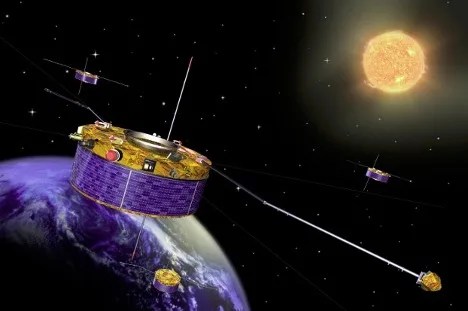Cluster-II
Type
Launch
Target
Objective
Cluster II was a space mission sponsored by the European Space Agency (ESA), along with NASA participation focused primarily on the study of the Earth's magnetosphere over the course of approximately two solar cycles.
The Cluster II spacecraft, FM8 (Tango), was launched together with FM5 (Rumba) by a Soyuz-Fregat rocket from Baikonur. The four similar spacecraft of the Cluster II mission were part of ESA's and NASA's Solar-Terrestrial Science Program (STSP). The Cluster II mission was a near-replica of the original four-spacecraft mission lost at launch in 1996. (NSSDC will carry the name "Cluster96" in its information files to designate the unsuccessful 1996 four-spacecraft Ariane 5 launch.) The purpose of the Cluster II mission was to study small-scale structures in three dimensions in the Earth's plasma environment, such as those involved in the interaction between the solar wind and the magnetospheric plasma, in global magnetotail dynamics, in cross-tail currents, and in the formation and dynamics of the neutral line and of plasmoids.
The four Cluster II spacecraft orbited in a tetrahedral formation in near-polar orbits of nominally 4 x 19.6 Earth radii, with period about 57 hours, and inclination about 90.7 degrees. Relative distances between the spacecraft were adjusted during the mission, depending on the spatial scales of the structures to be studied, varying from a few hundred km to a few Earth radii. The tetrahedral formation was essential for making three-dimensional measurements and for determining the curl of vectorial quantities such as the magnetic field.































